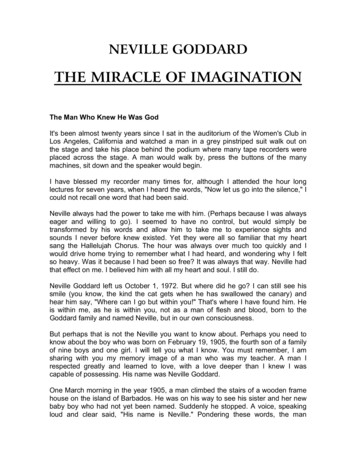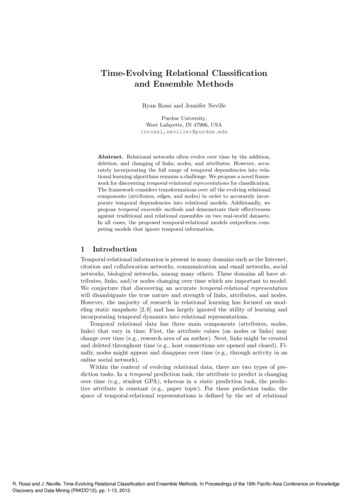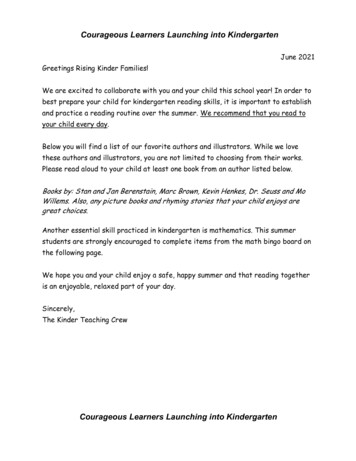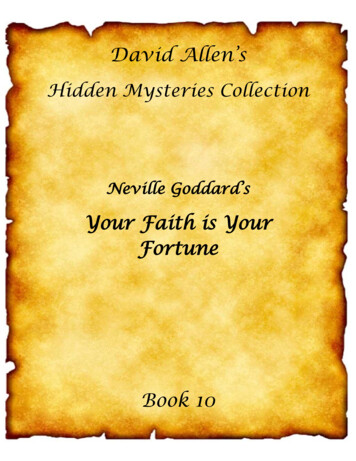
Transcription
T.H. Whiteread byNeville JasonNA387412D
1234567891011121314151617181920The Sword in the StoneThe Mews was one of the most important parts The night fell The Wart went over to the tree The boy slept The Wart was so startled The vanity-glass vanished The Wart started talking Sir Ector’s home was called The Roach’s Mamma was lying on her back Tilting and horsemanship had two afternoons.While this incantation was going on Without further words the gentleman retreated They met in the middle It was a cold wet evening All the hawks were silent ‘What is the first law ’‘Well!’ said the Wart The Wart was still staring at his tutor’s They went to the man cautiously :088:477:595:558:154:575:505:56
212223242526272829303132333435363738‘If the boys have got to be in it ’After the staff lecture They dragged him from under They had an immense reception.She waved her apron at the sergeant He climbed to the solar The Wart got up early next morning There were five long minutes So King Pellinore was bent over the dead It was haymaking again The call sounded from far away ‘Nonsense’, exclaimed the Wart The old gentleman scratched about King Pellinore arrived King Pellinore closed his eyes tight The knighting took place There was a lot of cheering Perhaps there ought to be a chapter :106:396:357:575:064:48
T.H. WhiteThe Arthurian legends are England’s greatepic, as full and embedded a part of thecultural heritage as the Greek myths,with the same imaginative hold as Biblicaltales or Shakespeare’s plays. The storieswere originally collected and written bySir Thomas Malory, and published in 21books in 1485. These tales of chivalrousknights undertaking brave challenges,of a noble king bringing egalitarianism,honour and decency to a land governedby brutishness and violence, have servedas political and personal metaphors eversince, giving rise to countless books,poems, songs, pictures, films, musicals,television programmes, documentariesand archaeological searches. The searchfor Arthur’s final resting place, thepossibility of his reappearance and hishistorical authenticity are argued withexactly the same passionate dedicationby his followers as those of other faiths.Thomas Hanbury White (1906-1964) wasby no means the first person to takethe tales and turn them into somethingelse; but few have had such a broad andthriving appeal. The Sword in the Stonein particular became a template for a newtelling of the iconic tale, where the youngArthur finds himself king by innocentlypulling Excalibur from its lodging. WaltDisney turned it into a hugely successfulanimated film in 1963.Talking animals, endearing magicians,broad slapstick, jousts, feasts andsplendour are all certainly in place; butit is not just fantastical children’s fiction.The Sword in the Stone is ostensibly abouthow Arthur became King, but most ofit sees him being brought up in a ruralworld that owes much to White’s notionsof an ideal childhood. Here, the youngArthur learns the ways of animals and theways of nature; how to be honest andbrave; and he gets the opportunity to talkto animals as one of them, thanks to the4
interventions of his tutor, the magicianMerlyn. Merlyn is a captivating man livinghis life backwards, who realises he has aduty to teach his two pupils (Arthur andhis foster-brother Kay) well – and one ofthem in particular.Through a series of adventures thatinvolve being turned into animals anda meeting with the real Robin Hood,Merlyn instructs his young charges in theways of the world, and with lessons of abroader wisdom, too. But his teachingsseem aimed principally at the Wart (theyoung Arthur), something Kay beginsto resent – after all, Kay is to become afull and proper knight, and the Wart canonly hope to be his squire. But there isgood reason for Merlyn concentratinghis efforts on the Wart, as they discoverwhen, hearing of the King’s death, they allgo to London to a grand tournament. TheKing had no heir, and a rightful one mustbe found by testing the mettle of thoseknights who wish to take on the role. Toprove themselves, they must pull a swordfrom an anvil resting on a stone White was born in 1906 in India,and completed his education at Queen’sCollege, Cambridge. He had startedwriting while still at university, becoming afull-time author and naturalist from 1936,and much of The Sword in the Stone (whichwas published in 1939) reflects his severalpassions – the medieval period, the naturalworld – and his profound concerns aboutthe approach of war. The later books in theseries contemplated pacifist social theoriesthat did away with wars altogether, seeingthe ideal of Arthur’s reign as somethingto be aspired to. The Sword in the Stoneis different, in that it concentrates onhow White imagined life in a thirteenthcentury castle. It is filled with descriptionsof feasting, jousting, archery, hawking andhunting, and shows throughout a deepunderstanding of the events it describesand a sympathy for the relationshipbetween man and animals. There is comedy– with Sir Ector’s friends King Pellinore andSir Grummore Grummursum chasing theQuesting Beast or challenging each otherdespite their own incompetence – andthere is also genuine adventure and dangerfor the heroes.But White was not just offering areworking of the Arthurian legend. He5
clearly had his own deeply personal, aswell as broadly social and political, issuesto place in the context of a lost worldof grace and humanity. What gives thebook such depth, however, is not just theplot or the underlying implications of thestorylines (strong as they all are); nor is ittheir place in epic, fantasy or Arthurianlegend. It is partly the characters –honest, steadfast Arthur; the outstandingMerlyn, absent-minded, humane andfallible, but always invaluably puttingthings into perspective; the petulantKay; noble and generous Sir Ector; theendearingly clumsy King Pellinore; andthe animals, too, who are credited with asmuch individual character as the people.It is partly, of course, the imaginativestrength of the author, bringing suchworlds as medieval tournaments, falconry,boar hunts or battlefields alive with vividdetail. It is partly, too, the unashamedbrio with which White describes the foodof the time, or the intimate features ofthe feathers of a particular bird, or theslightest aspect of hunting, heraldry orarmour; or his unapologetic use of termsthat were obscure when he wrote them,and have all but disappeared now. Theseall combine to show that White was notcondescending to a childish audience, buttaking every reader with him into Arthur’smore-than-mythical kingdom to see whatit stood for, yearn for what it was, and forwhat we can still learn from it.A note on the textWhen T. H. White revised The Sword inthe Stone, he removed certain passagesand replaced them with ones from a laterbook called The Book of Merlyn. This Naxosversion has used most of his original story,but Arthur’s first meeting with Morgan leFay (which White introduced to replacea sequence about meeting cannibals)has been kept. This maintains some ofthe most memorable and endearingcharacters from the original book but atthe same time allows a major character tomake her appearance, and thus prefigureher role in the later books of the series.Notes by Roy McMillan6
Neville Jason trained at RADA where he was awarded the DictionPrize by Sir John Gielgud. He has worked with the English Stage Co.,the Old Vic Company and the RSC as well as in films, TV and musicals.He is frequently heard on radio. As well as Remembrance of ThingsPast, he also reads Tolstoy’s War and Peace, The Life and Works ofMarcel Proust, Far from the Madding Crowd, Decline and Fall of theRoman Empire and Swift’s Gulliver’s Travels and has directed Hamletand A Midsummer Night’s Dream for Naxos AudioBooks.7
The music on this recording was taken from the NAXOS catalogueLISZT SYMPHONIC POEMS VOL. 2New Zealand Symphony Orchestra / Michael Halász8.553355CHABRIER ESPAÑA / FÊTE POLONAISE / JOYEUSE MARCHEMonte Carlo Philharmonic Orchestra / Hervé Niquet8.554248LISZT SYMPHONIC POEMS VOL. 3New Zealand Symphony Orchestra / Michael Halász8.557846Music programmed by Sarah ButcherCover picture: Hannah Davies8
Other Junior Classics on Naxos AudioBooksThe Witch in the Wood& the Ill-Made Knight, unabridged(White) ISBN: 9789626348697read by Neville JasonThe Sword in the Stone, unabridged(White) ISBN: 9789626348536read by Neville JasonKing Arthur and the Knightsof the Round Table(Flynn) ISBN: 9789626341384read by Sean BeanTales from the Norse Legends(Ferrie) ISBN: 97896263440127read by Benjamin Soames9
Other Junior Classics on Naxos AudioBooksA Connecticut Yankeein King Arthur’s Court (Twain)ISBN: 9789626342183read by Kenneth JayTales of Irish Myths(Ferrie) ISBN: 9789626342046read by Benjamin SoamesTales from the Greek Legends(Ferrie) ISBN: 9789626340196read by Benjamin SoamesMore Tales from the Greek Legends(Ferrie) ISBN: 97896263444125read by Benjamin Soames10
Read by Neville JasonNeville Jason trained at RADA where he was awarded theDiction Prize by Sir John Gielgud. He has worked with theEnglish Stage Co., the Old Vic Company and the RSC as wellas in films, TV and musicals. He is frequently heard on radio.As well as Remembrance of Things Past, he also reads Tolstoy’sWar and Peace, The Life and Works of Marcel Proust, Far fromthe Madding Crowd, Decline and Fall of the Roman Empireand Swift’s Gulliver’s Travels and has directed Hamlet and AMidsummer Night’s Dream for Naxos AudioBooks.CD ISBN:978-962-634-874-1View our catalogue online atwww.naxosaudiobooks.comALL RIGHTS RESERVED. UNAUTHORISED PUBLIC PERFORMANCE,BROADCASTING AND COPYING OF THESE COMPACT DISCS PROHIBITED.p 2008 NAXOS AudioBooks Ltd. 2008 NAXOS AudioBooks Ltd.Made in Germany.Kay and his foster-brother (known as the Wart) are living in Sir Ector’s gloriouscastle amid the wild and beautiful Forest Sauvage. They are given a tutor –the magician Merlyn. And so begins one of the most inventive and charmingretellings of the Arthurian legend, The Sword in the Stone.Through a series of adventures that involve being turned into animals anda meeting with the real Robin Hood, Merlyn instructs his young charges in theways of the world, and imparts to them a broader wisdom too. One of themwill need it – the King has died leaving no heir, and a rightful one must befound by pulling a sword from an anvil resting on a stone Produced by Roy McMillan. Abridged by Neville JasonRecorded at Motivation Sound Studios, LondonEdited by Sarah ButcherrT.H. WhiteTotal time3:52:44
2 1 The Sword in the Stone 7:27 2 The Mews was one of the most important parts 5:01 3 The night fell 6:02 4 The Wart went over to the tree 5:45 5 The boy slept 6:14 6 The Wart was so startled 5:19 7 The vanity-glass vanished 4:55 8 The Wart started talking 4:55 9 Sir Ector's home was called 8:21 10 The Roach's Mamma was lying on her back 8:13 11 Tilting and .











